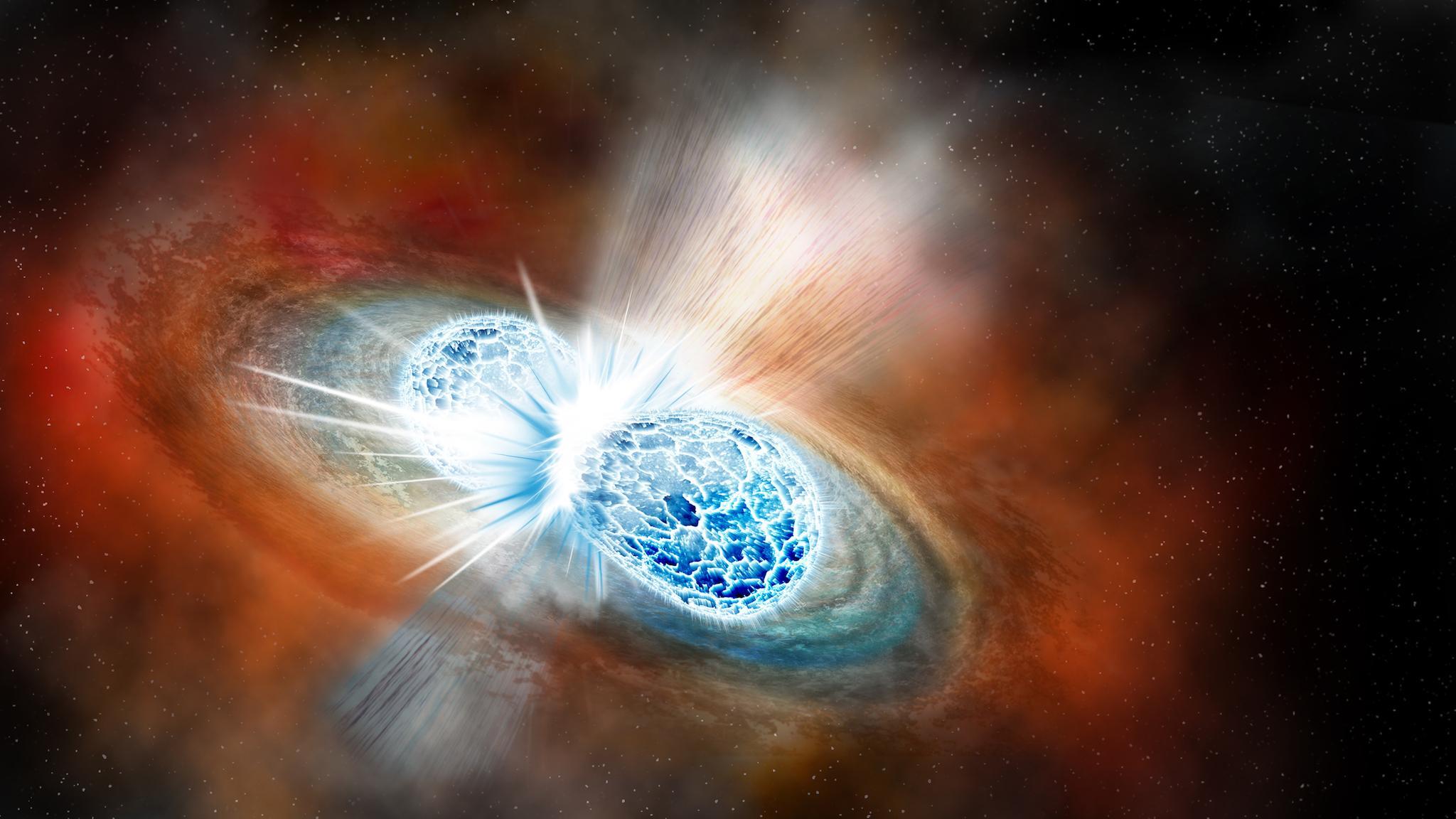Stellar collision: What we learnt from the spectacular, violent explosion of two stars deep in space
Einstein was very right, we now know where the gold and platinum in jewellery comes from – and that's not even all

Your support helps us to tell the story
From reproductive rights to climate change to Big Tech, The Independent is on the ground when the story is developing. Whether it's investigating the financials of Elon Musk's pro-Trump PAC or producing our latest documentary, 'The A Word', which shines a light on the American women fighting for reproductive rights, we know how important it is to parse out the facts from the messaging.
At such a critical moment in US history, we need reporters on the ground. Your donation allows us to keep sending journalists to speak to both sides of the story.
The Independent is trusted by Americans across the entire political spectrum. And unlike many other quality news outlets, we choose not to lock Americans out of our reporting and analysis with paywalls. We believe quality journalism should be available to everyone, paid for by those who can afford it.
Your support makes all the difference.Deep in space, two stars were entwined in a fatal dance with each other. It came to an end in one of the most violent events the universe has ever seen.
But their loss was scientists' gain. The shockwaves sent through the universe caused wobbles in spacetime – which made their way to us, and were picked up on Earth.
Scientists have described the event, which came by surprise, as the most spectacular firework show in the universe. It wasn't just a great show – it also revealed some of the universe's deepest mysteries, and its most closely held secrets.
Even the less remarked upon parts of the discovery would be breaking news on their own. The gravitational wave that allowed us to "hear" the event was stunning in itself, for instance.
But the headline news was the fact that gold streamed across the universe, flung out of the collision of the stars. And that explosion – which happened 138 million light years ago – lets us look into the very beginnings of the universe, and its strange, mystifying expansion.
GRAVITATIONAL WAVES
Scientists, starting with Einstein, figured that when two neutron stars collide they would produce a gravitational wave, a ripple in the universe-wide fabric of space-time. Four other times that these waves were detected they were the result of merging black holes. This is the first time scientists observed one caused by a neutron star crash.
WHERE GOLD COMES FROM
The Big Bang created light elements like hydrogen and helium. Supernovas created medium elements, up to iron. But what about the heavier ones like gold, platinum and uranium? Astronomers thought they came from two neutron stars colliding, and when they saw this crash they confirmed it. One astronomer described as a "giant train wreck that creates gold." They estimate that this one event generated an amount of gold and platinum that outweighs the entire Earth by a factor of 10.
GAMMA RAYS
Gamma ray bursts are some of the most energetic and deadly pulses of radiation in the universe. Astronomers weren't quite sure where short gamma ray bursts came from, but figured that a crash of neutron stars was a good bet. Watching this event confirmed the theory.
EXPANDING UNIVERSE
Astronomers know the universe is expanding, and they use a figure called the Hubble Constant to describe how fast. Two different ways scientists have of measuring this speed of expansion yields two numbers that are somewhat close to each other, but not quite the same. By measuring how far the gravitational wave had to travel, astronomers came up with another estimate that was between the earlier two, but it also comes with a large margin of error.
HOW FAST DO RAYS AND WAVES GO?
The crash showed that gravitational waves and gamma rays travel at nearly the speed of light — which is what Einstein's General Relativity theory says. NASA astrophysicist Julie McEnery said: "Yet again, Einstein passes another test."
Additional reporting by Associated Press
Join our commenting forum
Join thought-provoking conversations, follow other Independent readers and see their replies
Comments